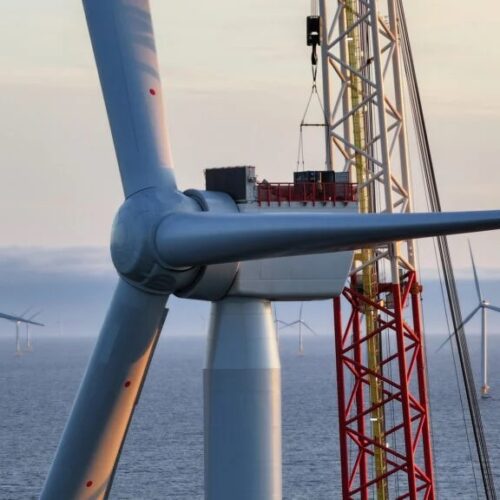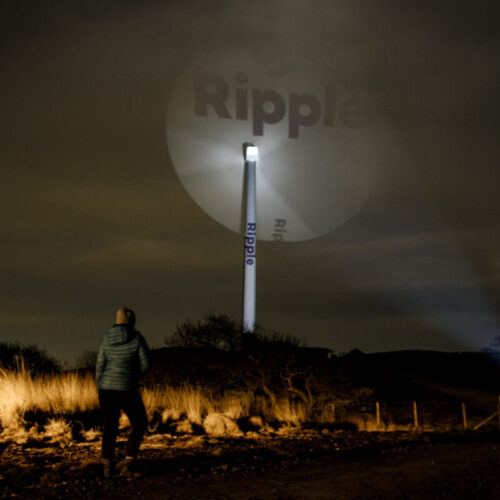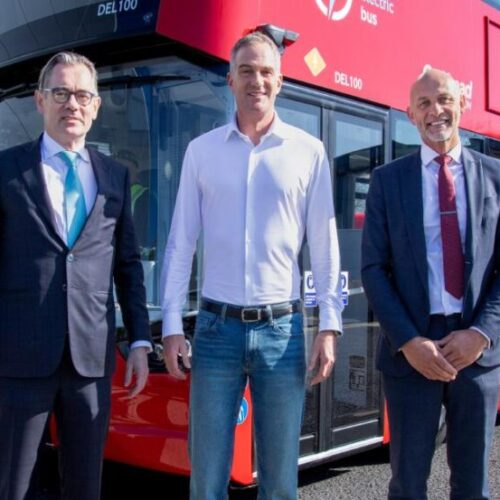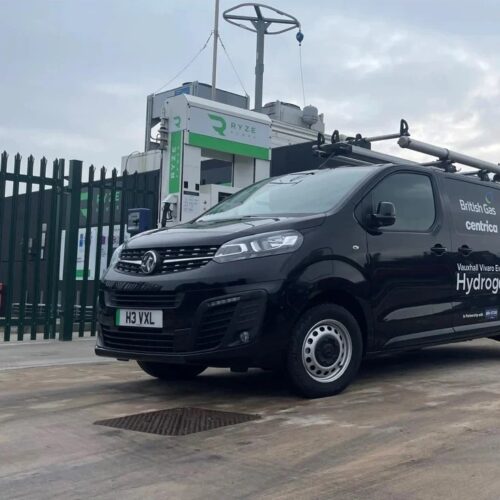The UK’s zero emission vehicle (ZEV) mandate, calling for the end of all sales of new internal combustion engine (ICE) cars from 2030, is the most ambitious in the world.
The government announced the new parameters of the mandate, which include allowing sales of hybrid electric vehicles and of ICE vans until 2035, last week, following a consultation launched in December 2024.
According to the REA’s head of transport and innovation Matthew Adams, the ZEV mandate is still “really encouraging”, and the extension for vans “avoids a lot of unintended consequences”.
Speaking to Current±, Adams explained that the main source of concern is the flexibilities written into the mandate being pushed up to 2029—flexibilities that allow manufacturers to sell below a yearly target if, in the following year, they make up the difference through additional sales, with interest, now mean that manufacturers can make up low sales as late as 2030.
This means that when it comes to the statutory review in 2027-28, there won’t be data available to prove manufacturers can meet those targets without any flexibility. As a knock-on effect, either those flexibilities are continued, or the sales curve for manufacturers to meet will get deeper.
Adams says that as a result, “all of these changes are going to be much more unpredictable”.
Adams also raises the fact that the ZEV mandate consultation included a question about what stakeholders would like to see in terms of demand incentives for EV uptake.
Over the months that the consultation ran, the industry put a lot of time into answering that. The government’s response has been to act on none of the proposals put forward.
For Adams, “that was, obviously, quite disappointing personally, given the amount of effort we put into getting our response in. Generally, I also think both sides, vehicle manufacturers and the charging sector, were also disappointed having hoped to see more demand-side incentives”.
What those incentives look like is still up for debate, but the REA’s suggestions were around scrappage schemes or 0% interest-free loans for first and secondhand ZEVs. Such a scheme has been successful in France.
Fast tracked consultation and global headwinds
The consultation response was released shortly after US president Donald Trump announced trade tariffs that would hit the UK’s car manufacturers (albeit less harshly than other countries). Since then, Trump declared a 90-day pause on those tariffs for every affected country but China.
Although this timing meant that the updated mandate could be presented as a direct support to carmakers in response, as previously mentioned, the consultation had been ongoing before Trump’s inauguration.
The consultation had always been said to be ‘fast-tracked’, and results of a government consultation coming in under a year—in this case as little as three months since launch—is as good as unheard of; Adams calls the turnaround “pretty darn good—and the definition of fast track”.
Whether the fast-track is to blame or a need to reassure carmarkers sped the government’s decision is unclear (and perhaps immaterial).
For Adams, though, the economic climate, at least in the short term, puts the UK in an advantageous position to get cheap electric cars to consumers. He concedes this may not be ideal for domestic manufacturers, but for consumers (and in the absence of demand incentives) an influx of cheaper, Chinese-made EVs can only be positive.
So, he says, despite the additional flexibilities, “perhaps we’ll see through other wider international economic policies more electric cars coming onto the UK market, which will hopefully mean the prices get even lower and more people will be able to afford them anyway”.
In some ways, the relaxed mandate is unsurprising, given the threats of factory closures and job losses made by car manufacturers late last year.
“That makes a very powerful argument for making it easier for manufacturers to hit targets, especially given that OEMs in general have very geographically strong employment rates,” Adam says.
He adds: “I always felt that it was going to be a bit of an uphill battle. Seeing the sort of press that garnered at the time, I think we were always going to be on the receiving end of something we weren’t necessarily going to be 100% happy with. But the main thing is that the 2030 target remains.”
The future of EV charging
Remaining positive about the 2030 date, especially given the push from some carmakers for the mandate to be pushed back to 2035, is a key element of Adams’ response to the mandate.
The focus now, he says, is twofold. First, the EV charging industry is awaiting clarity on the £200 million for on street EV charging. About £10 million of that has been allocated for grants, but that leaves a large portion that Adams says “could be used to really put some pace on getting on street infrastructure out”.
That what it will be spent on remains unknown close to six months after being announced is “quite disappointing”.
The government was elected on promises made to the industry when it announced its transport plan in 2023—this is the second area of focus identified by Adams. Labour’s promises around re-examining and re-investing existing funding, particularly the Low Emission Vehicle Infrastructure (LEVI) grant and the rapid charging fund (RCF).
Since 2023, LEVI funding has been rolled out relatively effectively. But while the REA is happy with that, there has been “absolutely zilch” on the RCF.
Launched in 2020, the RCF intended to part-fund the capital costs of upgraded grid connections along the strategic road network—this would have ensured charging provision could be rolled out at motorway service points, in particular.
With the fund untouched, there is £950 million funding “just sitting there”. With more private investment available in the space now and 80% of motorway services EV-charging-enabled, that money should be reinvested elsewhere.
The REA suggests a diversion of funds to HGV charging infrastructure along the strategic road network.
“Otherwise, we’re going to end up having to dig up the entire strategic road network again in two or three years’ time to put in 1MW chargepoints, which seems wasteful,” Adams adds.
He also points out that the government’s release about the ZEV mandate heavily implied that its infrastructure strategy “might be the saving grace of all of this”.
Talks between the Department for Energy Security and Net Zero (DESNZ) and members of the EV charging industry, including ChargeUK’s Vicky Read, show that ministers are listening. Where the ZEV mandate placated carmakers, perhaps the Planning and Infrastructure Bill will provide similar reassurance to the clean transport sector.





